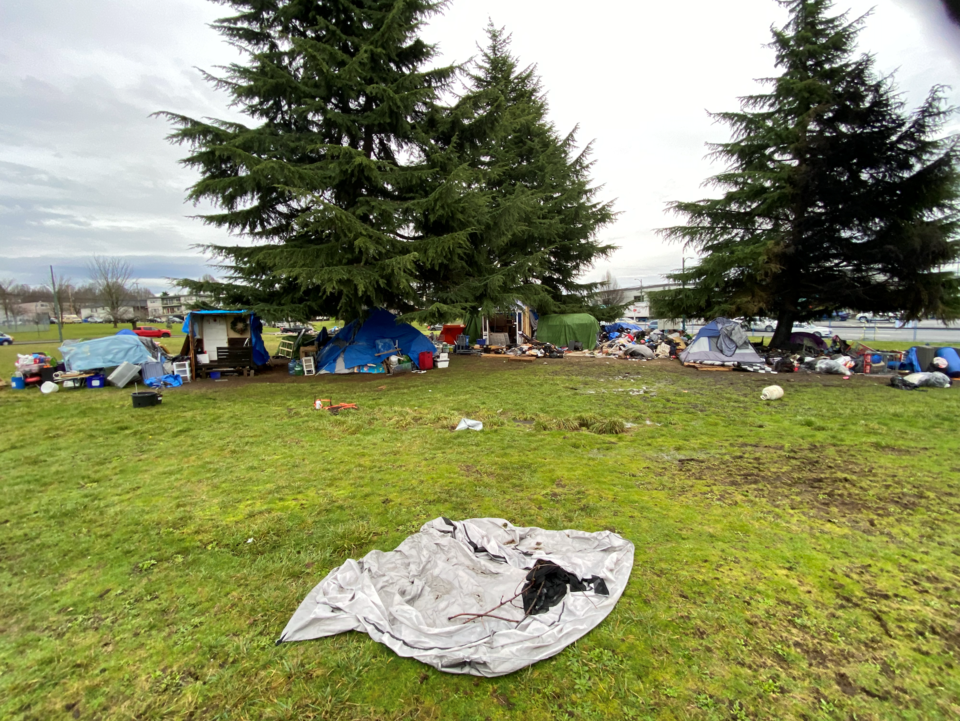Homelessness, , often begins with eviction. Once a person or family is evicted, as they try to find affordable housing in an increasingly competitive market.
For example, consider a long-term tenant in Kitchener paying $1,300 for a two-bedroom apartment. If evicted — whether due to a landlord’s decision to move in a family member, demolish the building or sell it — the tenant will be thrust into a housing market where the . This steep price increase is untenable for many, especially those earning minimum wage.
The risk of eviction is not just limited to those in precarious financial situations, but can impact renters across the board. This reality highlights the urgent need for stronger tenant protections to safeguard individuals and families from being unhoused.
In the metropolitan area of Kitchener-Cambridge-Waterloo, for instance, for full-time minimum wage workers. All across Canada, .
This situation is even more dire for seniors relying on fixed incomes, single parents and those on social assistance. For example, a single person’s maximum monthly shelter allowance and is $697 for a family of three. For international students without government support, .
As an eviction prevention worker, my work and the work of my colleagues is crucial for stopping people from falling into circumstances that expose them to further marginalization and hardship.
Systems of oppression
The most marginalized groups in society are often the hardest hit by housing instability. Statistics show that low-income individuals, particularly those who are Indigenous and racialized people, as well as people with disabilities, people with mental health and addiction issues, and newcomers, are .
Systems of oppression . Those who are poor, Black, Indigenous or people of colour, elderly or living with disabilities face the greatest barriers to meeting their basic needs, including securing stable housing.
It’s clear that current strategies are falling short of addressing the issue. The , such as the near-impossibility of securing new rental housing after being evicted from an affordable unit for those not earning a high income.
Social housing waitlists in many regions stretch to seven years or longer, and even below average market rent units may be out of reach or unsuitable for families with specific needs. This perpetuates the cycle of housing instability, leaving the most vulnerable populations with few options.
Ending chronic homelessness
Supporting low-income tenants through affordable housing must be a priority for addressing the growing housing crisis. To effectively combat short-sighted policies about who is eligible for financial support when rent payments fall behind, a more holistic approach is needed — one that considers the .
Since the , the availability of affordable housing has steadily declined.
A more compassionate and human-centred approach is needed to provide support to those at risk of eviction. To , we must stop evictions. Adopting a community-based perspective is essential to protect vulnerable tenants from the risk of homelessness.
The Region of Waterloo’s new is a promising step in the right direction. By incentivizing landlords to maintain affordable units, this program could help preserve existing housing stock.
However, a broader, multi-pronged approach that considers the well-being of entire communities is necessary to create lasting solutions.
Growing wealth divide
Renters in Canada generally have lower incomes and spend more money on housing than homeowners. In 2023, while Canadian homeowners saved seven per cent of their take-home pay, renters, on average, . The wealth disparity is stark, with homeowners’ net worth being four times that of renters.
since 2017. In 2021, 22 per cent of Ontario’s property purchases were made by those who already owned property.
It has become close to impossible for renters to save enough for a down payment and, even if they can, they don’t have much of a chance to compete with investors.
As Brian Doucet, Canadian Research Chair in Urban Change and Social Inclusion at the University of Waterloo, has noted, , a contradiction that lies at the root of the problem.
if new units are unaffordable and cater primarily to investors rather than those in need. The construction of high-rise condos with expensive rental units will only exacerbate the issue. The focus should be on building housing that actually meets affordable housing needs.
Community-centred approach
To truly address the housing crisis, it is essential to prevent the loss of affordable units and protect vulnerable tenants from eviction. Incentives for landlords to maintain affordable housing are crucial, as is halting any development that results in a net loss of such units.
A long-term, community-centred approach is necessary — one that goes beyond quick fixes and addresses the root causes of housing instability.
The working conditions of those on the front lines of this crisis, like myself, also need to be addressed. Workers are often overwhelmed and burned out, but there is hope. My experience in eviction prevention has shown that meaningful change is possible through the collaborative efforts of peer support workers, outreach workers, lawyers, social workers, settlement workers and mental health specialists.
However, real progress requires a candid assessment of the current system’s failures. By acknowledging these shortcomings, Canada can begin to create meaningful transformational change that genuinely improves the lives of the people who live here.
Leah Connor does not work for, consult, own shares in or receive funding from any company or organization that would benefit from this article, and has disclosed no relevant affiliations beyond their academic appointment.




